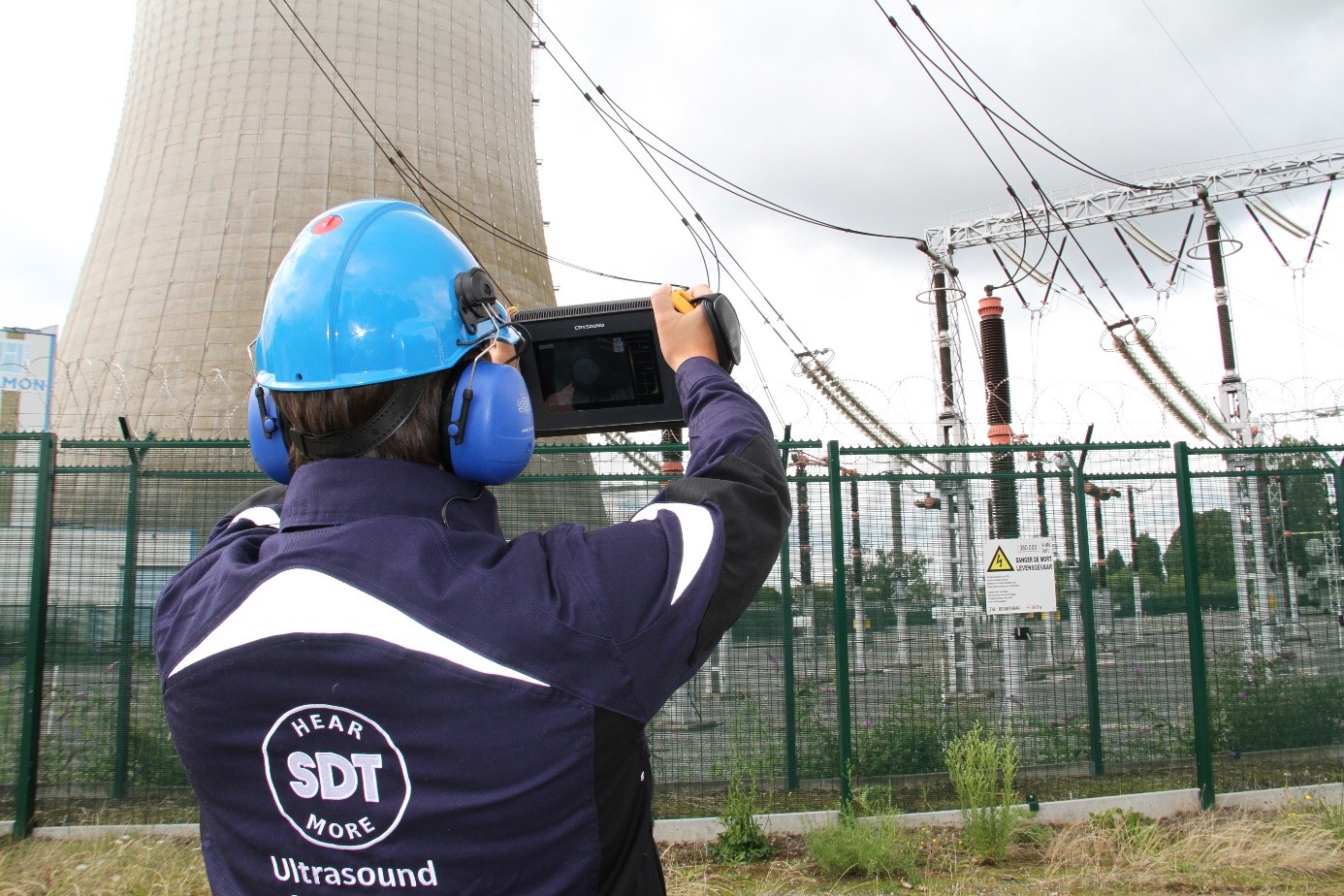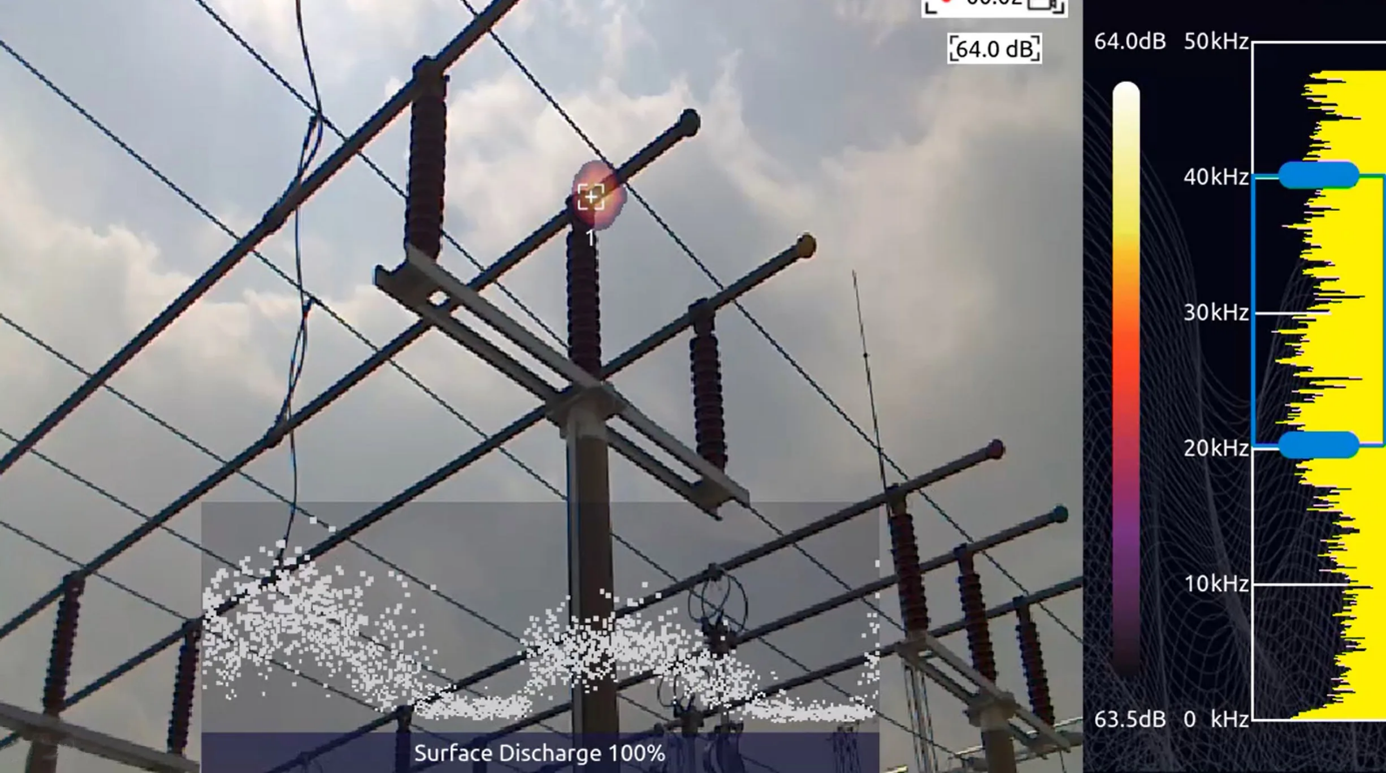When it comes to exploring the complexities of electrical power transmission and distribution, the CRYSOUND acoustic imager can be a powerful ally and a game-changing technology. Indeed, unlike traditional methods, CRYSOUND can not only detect partial discharge (PD) in polymer insulators, but also redefine standards of accuracy, efficiency and safety.

The Crucial Role of Polymeric Insulators
Polymeric insulators play an essential role in electricity transmission networks, supporting and insulating electrical conductors. Made from composite materials such as silicone rubber, these insulators are designed to withstand a variety of environments, from scorching deserts to fluctuating temperatures. However, their resilience is constantly put to the test by the elusive threat of partial discharges.
Understanding Partial Discharge
Partial Discharge (PD) is a localized electrical discharge in the insulation system, creating sparks that do not completely bridge the gap between the conducting electrodes. More than a physical phenomenon, PD is a chemical reaction at the atomic level. The resulting by-products, nitrous oxide and ozone, may seem harmless in isolation, but become corrosive when combined with water vapor.
Polymer insulators, though robust, have their limits. The corrosiveness of PD, if left unchecked, leads to degradation over time. It is therefore imperative to constantly monitor the condition of insulators in order to assess their remaining service life and mitigate potential risks.
While different technologies compete to offer the most cost-effective and efficient solution, the CRYSOUND imager distinguishes itself by its exceptional and unrivalled capabilities. Thanks to its advanced acoustic imaging capabilities, it goes beyond the capabilities of traditional methods such as infrared thermography and basic ultrasound.
More than just a tool, the CRYSOUND acoustic imager is designed to meet the complexities of electrical asset inspection. Its key feature is a remarkable detection range of up to 120 meters, providing unprecedented information on potential PD anomalies. And in industrial situations where every meter counts, CRYSOUND is the right tool for inspection accuracy.
The integration of a 128-microphone MEMS sensors also allows operators hear and view ultrasound sources in real time. The color display, combined with Bluetooth headset compatibility, enhances the inspection experience, making it not only efficient but also user-friendly.
Intelligent Recognition Features: A Game-Changer in Fault Diagnosis
Another key feature that sets the CRYSOUND apart from other imagers on the market is the integration of intelligent recognition functions, including PRPD mapping. This advanced capability allows users to display partial discharge types on the camera screen in real time, enabling early fault diagnosis. Even before thermal cameras detect them, CRYSOUND evaluates partial discharge types, offering a proactive approach to electrical maintenance.

Real-World Validation
The efficacy of CRYSOUND isn’t just theoretical; it’s validated in the real world. Recent field inspections conducted by experienced electrical inspectors showcase CRYSOUND’s ability to detect PD-related issues in polymer insulators within substations. The minimal training required for field usage underlines its accessibility and practicality.
A Potential Lifesaver
But CRYSOUND is not just a tool for fault detection, it can also be a life-saving partner. A study carried out in France over a ten-year period, revealing the alarming prevalence of arc flash injuries, highlights the urgent need for preventive measures.
Arc flash injuries account for 77% of all recorded electrical injuries, of which 21% result in permanent disability and 2.4% in death. Exposure to electricity is inherently dangerous, and the stakes are highest when appropriate personal protective equipment (PPE) is not worn. The majority of injuries resulting from exposure to an arc flash manifest themselves as body burns, and the chances of survival are closely linked to age and the extent of the burns sustained.
This unfortunate reality raises essential questions about safety, and highlights the need for effective solutions. The CRYSOUND acoustic imaging camera, designed to detect electrical faults, especially the elusive partial discharges, is becoming an indispensable asset.
Its advanced capabilities enable it not only to identify these electrical faults, but also to determine their severity, enabling timely intervention to prevent accidents and maintain a safe working environment.
The impact of CRYSOUND goes beyond fault detection. With this tool, every manufacturer is able to better guarantee their safety and environmental responsibility. By identifying electrical faults at an early stage, CRYSOUND enables maintenance teams to plan interventions, prevent potential disasters and minimize downtime.




